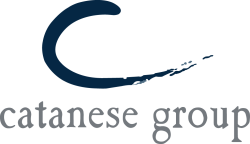Cost Accounting and Profit Planning for Professional Service Industries

By Sam Catanese, CPA
Leading Partner
In the 20 years that I have been implementing cost accounting systems for professional service firms, I’ve continued to encounter those who think that cost accounting doesn’t apply to them – that it’s more suited to industries like manufacturing. While we in service industries do not produce durable goods, we do have measurable production, and cost accounting certainly does apply. Our production is based on time spent serving client needs, and understanding this is vital in understanding how cost accounting can be applied to service firms.
All professional service firms should implement a cost accounting system if they want to understand their own business. By implementing a cost accounting system, your firm will be able to determine profitability by producer, division, office location, and even client.
While at Harvard Business School, I developed a cost accounting program for service firms. Utilizing my own firm as the pilot, we achieved a 350% increase in profits in less than a year resulting from the new profit planning and measurement system we put in place. We still use this program today for our firm as well as for our clients.
The biggest challenge for a cost accounting system is how to allocate overhead. The cost accounting program that I developed calculates overhead at a minimum, approximately 10% to 15%. The secret to a good cost accounting system is to have most expenses directly allocated to a producer. By doing this you can actually achieve a cost per hour for each producer.
 Most firms establish billing rates by assumption. Producer Smith has been here for 15 years and does good work. His billing rate is $250 per hour. Producer Jones has been here for 12 years but she is really good at what she does and is a specialist. Her billing rate is $300 per hour.
Most firms establish billing rates by assumption. Producer Smith has been here for 15 years and does good work. His billing rate is $250 per hour. Producer Jones has been here for 12 years but she is really good at what she does and is a specialist. Her billing rate is $300 per hour.
After understanding the costs to Producer Smith and Producer Jones, the cost per hour for Producer Smith may be $150 per hour and the cost for Producer Jones may be $325 per hour. This would make Producer Smith very profitable ($100/hr) to the firm and we would lose money on Producer Jones (-$25/hr). This holds true for every client of the firm, as well. The cost accounting system would tell you if clients are profitable. This also will tell you if divisions within the firm are profitable or not.
Most firm owners believe that if you have a large client, then they must be profitable. That is not always the case. In fact, an average of 30 to 40% of large clients are not profitable to firms like yours. In some firms, the percentage is even higher.
All firms have low value and low-income clients. They bring no value or purpose to your firm. There is always a rationalization or excuse as to why they are with the firm. The biggest problem with these clients is that the partner-in-charge always has a reason to keep them. They, on average, represent 3 to 5% value and take 10 to 15% of your resources.
After understanding your costs, you should establish a profit plan for the firm. A profit plan is different than a budget. A budget is expense driven, while a profit plan is revenue driven. A profit plan establishes revenue goals that the firm works toward each year. By understanding firm costs, making adjustments to billing rates, controlling write-down amounts, dropping unprofitable clients and managing your billable hours, profit goals can easily be met.
Action Plan
- Implement a cost accounting system.
- Establish cost per hour for each producer.
- Identify profitability by producer, client, division, and office.
- Establish a profit plan for the firm.
